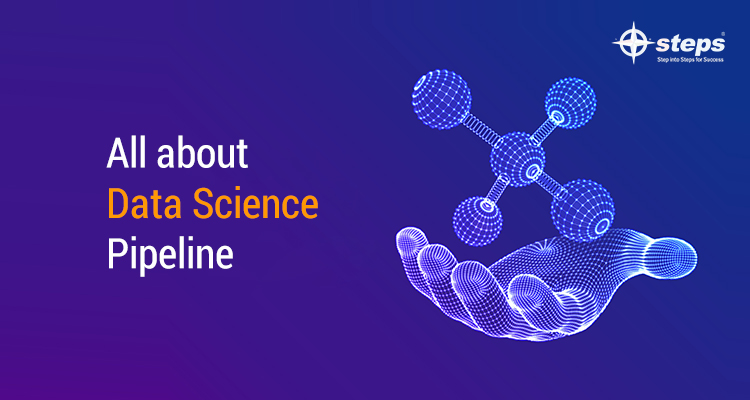All about Data Science Pipeline

Knowledge on the typical work flow of how the data science pipeline works is a very crucial step in understanding and problem solving in business. The first step in solving any data science problem is to formulate the questions that will be used to solve the problem. Following are the steps in Data Science pipeline:

Data Collection
Data is collected based on the understanding of the problem. It is a very tiresome and laborious process. All the available datasets which can be from the internet or external/internal databases can be used. It should be extracted into a usable format (.csv, json, xml, etc.). With more data, it is possible to build accurate models.
Data Cleaning/Preparation
The objective of this step is to examine the data thoroughly to understand every single feature of the data we are working with and identifying errors, filling data holes, removal of duplicate or corrupt records, throwing away the whole feature sometimes, etc. This step also requires time and effort. The data thus cleaned will be used for exploratory data analysis and modelling in the next steps.
Exploratory Data Analysis (EDA)
Understanding the domain helps to discover useful information and insights. We should use different types of visualizations and statistical testing techniques to back up your findings. This will help to reveal the hidden pattern through various graphs, charts, and analysis.
Modelling the Data (Machine Learning)
The objective of this step is the creation of relevant machine learning models, like predictive model/algorithm, to answer the problems related to predictions. We have to increase its accuracy by training it with fresh data, minimizing losses, etc.
Interpreting the Data
The objective of this step is to identify the insight of business and then correlate it to the findings. Domain experts can help with the visualization of the findings.
Deployment
When the model is ready, it is made accessible to the end users. The model created should be scalable. As new data become available, the model can be re-evaluated and updated.
Revisiting Your Model
When a model is deployed in a production unit, it is important to revisit and update your model periodically, as and when you receive new data or as the nature of model requirement changes. Updates will be as frequent as the reception of new data. The model will degrade over time and won’t perform as well, if regular updating is not done, which will in turn affect the business.
A good basics in Python and its data science packages is a must when trying to start or change your career in Data Science, which can be availed from the training received from the best Data Science training institute in Kochi. Tremendous opportunities to guide you into the right kind of training is present to understand the Pipeline of a Data Science project, which can be availed by the extensive course provided by the Data Science training in Kochi. Enroll now to start learning and exploring more about all the scopes in this field.

